Pay A Visit to Changsha
Although not as an- cient a capital city as Beijing, Nanjing or Xian, Changsha also has rich historical heritages including old wall remains, tomb sites, religious temples and buildings. What earns the city its reputation among visitors are two things. One is a great man in recent history, Chairman Mao Zedong and the other is Yuelu Academy, a time-honored academic school perched on the scenic Mt. Yuelu. Originally built in 976 during the Song Dynasty, the academy school survived through the Yuan, Ming and Qing dynasties and is considered to be the cradle of Huxiang Culture, simply means the culture school in Hunan Province. Orange Isle, which is 1.2 miles(2 km) from the East Gate of Mt. Yuelu, is also worthy visiting.
Mawangdui Han Tombs found in the eastern suburb of Changsha is a family graveyard from the early Han Dynasty. The most fantastic historical relic should be the well-preserved mummified remains of a Western Han Dynasty woman excavated from the tombs. Some of thousands of relics unearthed include silk products, paintings, lacquer works, potteries, bamboo slips used for writing, weapons and herbs, all of which are exhibited in Hunan Provincial Museum.
Mt. Yuelu
Mt. Yuelu, which means the foot of Mt. Hengshan (Southern Mountain), is located on the west bank of Xiangjiang River and lies in the west of Changsha City. Its East Gate is about 1.2 miles(2 km) from from Orange Isle. Its a highly reputable scenic area in Hunan Province, an area that enables you to have a much clearer understanding of Changsha City once you have paid a visit to Mt. Yuelu.
The mountain is noted for its picturesque scenery. The towering trees that provide dense shade emerge through heavily planted foliage around the mountains and provide an instant sense of refreshment and vitality to the environment. The full-blown azaleas in spring, the tranquility and coolness in summer, the flamboyant maple leaves in autumn and the silver-colored trees covered with snow and frost in winter make it a delightful spot all year round.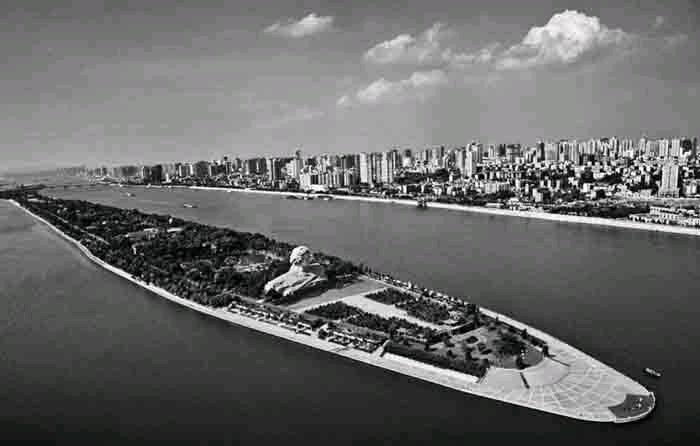
Besides the natural scenery, Yuelu Mountain abounds with cultural landscape as well. Many literati, ideologists, and hierarchy once visited here and left their tracks. The coexistence of Confucianism, Buddhism and Taoism is the most unique culture in this mountain. The representative buildings are the Yuelu Academy, the Lushan Temple, the Sarira Tower, the Yunlu Palace, and the Aiwan Pavilion. Additionally, the mountain is an excellent education base for patriotism. So many revolutionists, patriots and great people with high ideals like Huang Xing, Cai E and Jiang Yiwu, who were dedicated to the democratic revolution of the old type, were buried here. And the monuments, graves and cemeteries built for those martyrs make a solemn and stirring scene on the mountain.
With Lushan being the core, the mountian is made up of other scenic areas like Juzizhoutou, Tianma, Taohualing and Shijialing and two separate sights(the Old Site of The New Citizens Academic Association and Tuchengtou Site). The most renowned attractions on the mountain are the Yuelu Academy, the Lushan Temple and the Aiwan Pavilion, etc.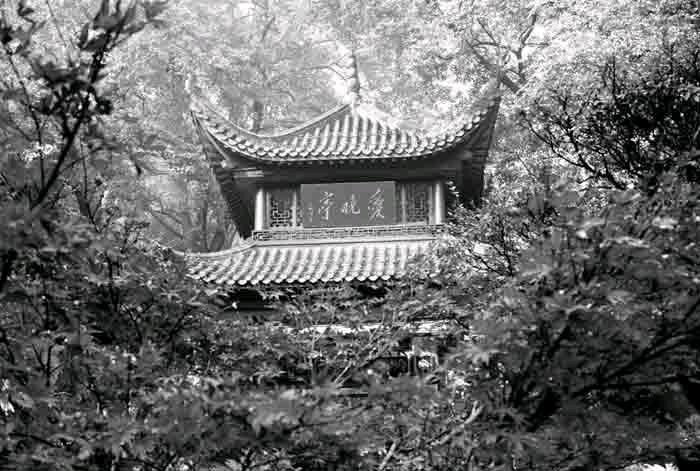
Orange Isle
Orange Isle is located in the center of Xiangjiang River in Changsha City of Hunan Province, about 1.2 miles (2 km) from the East Gate of Mt. Yuelu. As the biggest inland island in China, it is hon-oured as the “First Island in China”. Abounding with sweet and delicious oranges, people gave it the name Orange Isle, or Juzi Island in Chinese. It has a distinctive scenery in every season. Spring is the best time to watch gulls foraging along the Xiangjiang River. In summer, the bright sun endows Juzi Island with enthusiasm and vigor. When autumn comes, ripe oranges and pom- elos give off enjoyable smells, dispersing across the island. In winter, snow makes the island a white fairyland. The winter scenery of Orange Isle is one of the eight best known sceneries in Hunan Province.
According to records, Orange Isle was silted up by sand and stones in 305 A.D. and was composed of four smaller islands . As time passed, the four parts were connected and developed into one large island. In 1925, Chairman Mao Zedong, the founder of the Peoples Republic of China, revisited the place and wrote a famous poem, “Changsha Tune – Spring in a Pleasure Garden”, to praise it and express his willingness to build a new country, which made Orange Isle known worldwide. In 1960 a park was established on the island and two years later was opened to the public, named Orange Island Park. Since then the park has been improved greatly, attracting more and more visitors to appreciate the scenery and learn the dreams described in Mao Zedongs poem.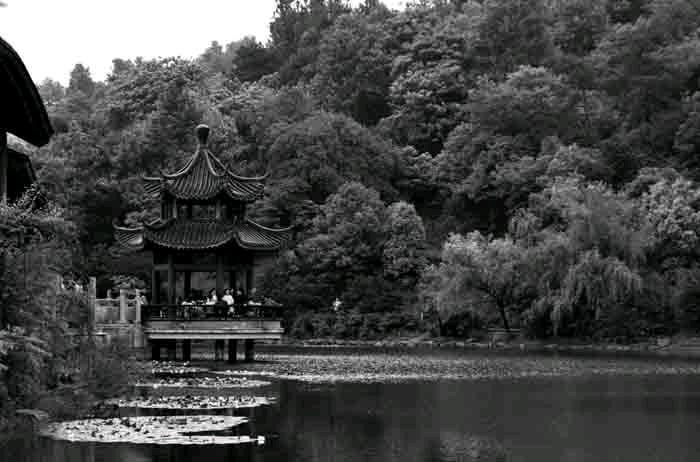
Mawangdui Han Tombs
Located in the eastern suburb of Changsha City, the world famous Mawangdui Han Tombs is one of the most fascinating attractions in Hunan Province. It is no exaggeration to say that the Mawangdui Han Tombs is an open book to the glorious West Han Dynasty. All three tombs were excavated between 1972 and 1974. According to the research this place was a family graveyard from at least two thousand years ago. The tombs are very grand and complicated as well. Number 1 and Number 3 tombs were in excellent condition when excavated and Number 1 is the largest among the three. Number 1 and Number 2 tombs have been in filled. Number 3 has been preserved and covered by a ceiling for the benefit of the visitors.
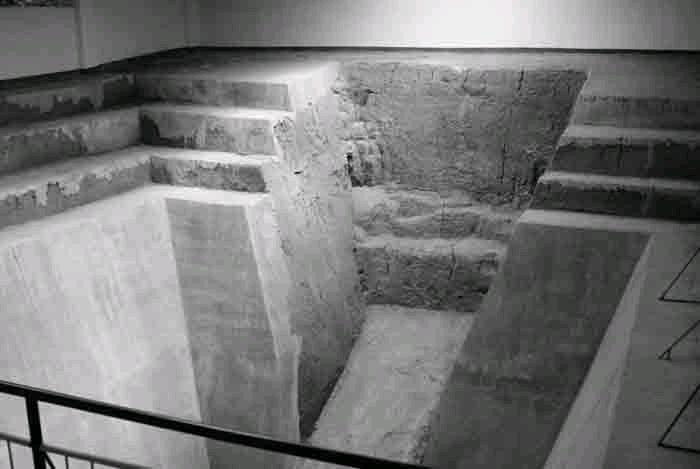
More than 3,000 relics have been unearthed from the three tombs, such as silk products, silk books, silk paintings,lacquer works, potteries, bamboo slips used for writing, weapons, herbs, and so on. The number of the lacquer works is the largest, including ancient cooking vessels, boxes, kettles, plates and folding screens, and the like. Red or black colors were painted on them. Most of the potteries contain food. The mouths of the containers were tightly stuffed by grass and mud. Bamboo brands with the name of the food tied on the outside of the containers necks. There are wooden tomb figurines both clothed and unclothed. The reason is that they had different social status according the strict ranking system during the West Han Dynasty. The silk clothes from Number 1 tomb are in a variety of styles and of fine workmanship. One of the most outstanding representatives is a silk coat which is as light as the mist and as fine as gossamer. It is 1.28 meters (about 1.40 yards) in length with a pair of long sleeves, but weighs only 49 grams. Amazing! The coffin excavated from Number 1 tomb is decorated with the odd images of animals and gods on its lacquered surface and has a relatively high artistic value.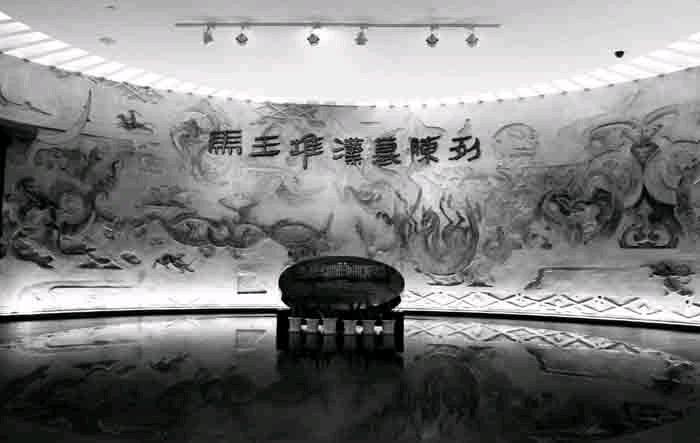
A map excavated from Number 2 tomb will provide another surprise. Its drawing technique is very advanced, place marks being very similar to a modern map. It was praised as ‘a striking discovery by foreigners when exhibited in America, Japan, Poland and many other countries.
Silk books, with more than one hundred thousand Chinese characters are rare historical artifacts. The content deals with ancient philosophy, history, science, technology, medicine and many other aspects.
The excavation of Number 1 tomb at Mawangdui can not only be considered a wonder in Chinese archeology, but also leave a profound effect world archeological history. The reason is that the corpse of this tombs owner---a noble lady and other articles buried with the dead were extremely well-preserved for more than 2,000 years, especially the corpse. When disinterred from the tomb, her corpse was complete and the whole body was still moist and supple. Some of her joints could move; her organs and surrounding tissues were still intact, and the skin still flexible; she was as if she had been buried yesterday. This is hard to believe and extraordinarily rare to see both at home and abroad, but definitely true. This female corpse is a special body different from mummies and adipocere. Meanwhile it is also a scientific miracle in the study of antisepsis, shocking the whole world and attracting the attention of both scholars and visitors. Try to think: when facing a lady who is more than 2,000 years old, how will be your feeling then?
The sarcophagus of Number 1 tomb was covered by a colorful silk painting. It is the best preserved painting of its kind of Han Dynasty with the highest artistic value in China. It is in the shape of the English letter ‘T, so people also call it ‘T silk painting. In fact, this kind of silk painting was called ‘long narrow flag in ancient time and used for funerals. It was held by the person who headed the funeral procession and then draped over the coffin when burying the dead. This particular silk painting from Number 1 tomb can be divided into three parts. The upper part is about the heaven, the middle part is about the earth and the lower part is about the afterlife. Heaven means the end-result for life of the dead. Earth shows the wealth and nobility of the dead when alive. World after death displays the happiness of the dead in the afterworld. The whole painting is symmetrical and colorful with fine depiction, reflecting the lofty painting skill in the Western Han Dynasty. All the mysteries, strange animals and mysterious signs in the painting present us with a romantic world with its own sense of symbolism. As yet no one has been able to interpret its real meaning.endprint
- 中国经贸聚焦·英文版的其它文章
- Latest Public Official Changes in China
- Exhibitions
- Liu Beixian Former Head of Chinese News Agency Expelled From Party for Graft
- Deng Weigen Former Mayor of Jiangmen,Guangdong under Investigation
- Ni Zhimao PhD student at Peking University act as Deputy Governor of Yuyang
- Qiao Baoping Former Chairman of Guodian Corporation act as Chairman of Na tional Energy Investment Group

